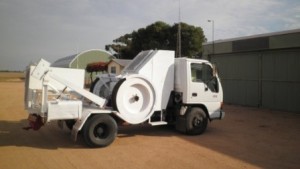About Gliding
Gliding, sometimes called “soaring”, is motorless flight. Gliders or “sailplanes” use naturally occurring atmospheric phenomena, commonly called “lift”, to gain altitude and stay aloft, often for many hours and covering hundreds of kilometres in the process.
Just like any other aircraft, gliders must adhere to stringent airworthiness standards and gilder pilots are required to obey the relevant air traffic control and airspace, procedures, rules, and regulations.
In Australia all gliding-related administration and regulation responsibilities are delegated to the Gliding Federation of Australia (GFA) under the auspices of the Civil Aviation Safety Authority Australia (CASA). This means that glider pilots must be members of the GFA, which sets the standards and regulations for pilot training and flying operations.
Flying without a Motor
A sailplane is traditionally launched either by winch, car, powered aircraft, or bungey. A newer alternative is the self-launching motorglider which has a fold-away engine that can be used for launch and then retracted back into the glider once airborne.
In a winch launch the glider is towed by means of a long wire that a winch with a powerful engine at the opposite end of the runway winds in at high speed. The glider is pulled into the air much like a kite and can readily achieve around 1500ft in altitude using this method. Winch launching is the method used by the Balaklava Gliding Club. It is by far the most cost effective. One of the club’s two winches is show on the right.
In Australia, aerotow launches are a very commonly used to get gliders airborne. The glider is pulled aloft by a rope that is attached to a towplane, also called a “tug”. The glider pilot can release the towrope at any time. This is more expensive but has the advantage that higher release altitudes can be achieved and the glider can be towed directly to where the lift is rather than having to search for it after release.

Once aloft the glider pilot searches for one of three types of lift. Thermals are columns of warm, rising air. Ridge lift is created by wind flowing up the windward side of a hill. Wave lift occurs when strong winds blow perpendicular to a ridge or mountain. On the lee side of the ridge or mountain the wind is then deflected upward, often with great force. Wave flights can reach altitudes well in excess of 30 000ft.
Soaring flights can be simple, local affairs or achieve great altitudes and distances. For instance, the world altitude record in a sailplane is more than 52 000ft. Distance flights of more than 1000 kilometres are reasonably common nowadays. The world distance record currently stands at over 3000 kilometres. Average speeds around predetermined routes over several hundred kilometres can reach well above 150km/h.
Thermals are by far the most common type of lift encountered and utilised by Balaklava club pilots, although wave to moderate altitudes can be contacted under the right conditions. Once in a thermal the pilot circles tightly to stay in the lift until high enough to fly cross-country in search of the next thermal. The speeds and distances achieved depend largely on the weather conditions and on pilot skill. However, almost anyone can learn to fly a glider safely.
On occasions a glider pilot may run out of lift before making it back to an airfield. In that case a normal landing – called an “out-landing” – is made wherever a suitable, sufficiently obstacle-free area is available, usually a farmer’s paddock. Gliders are designed and built for this eventuality and can be derigged within a few minutes. The glider is then trailered back to the airfield and reassembled in equally as short a time.
More about our fascinating sport and gliding clubs in Australia – indeed worldwide – can be found on the GFA web site.


